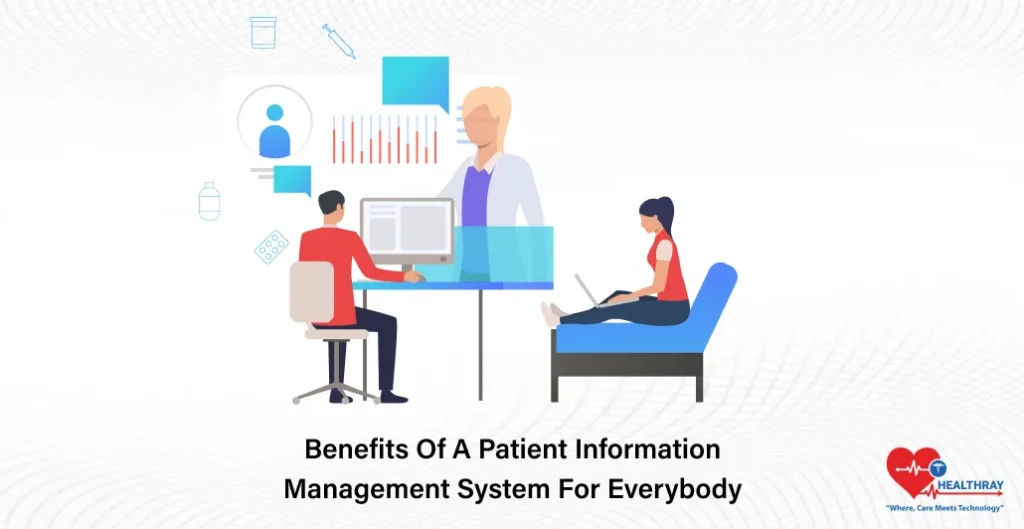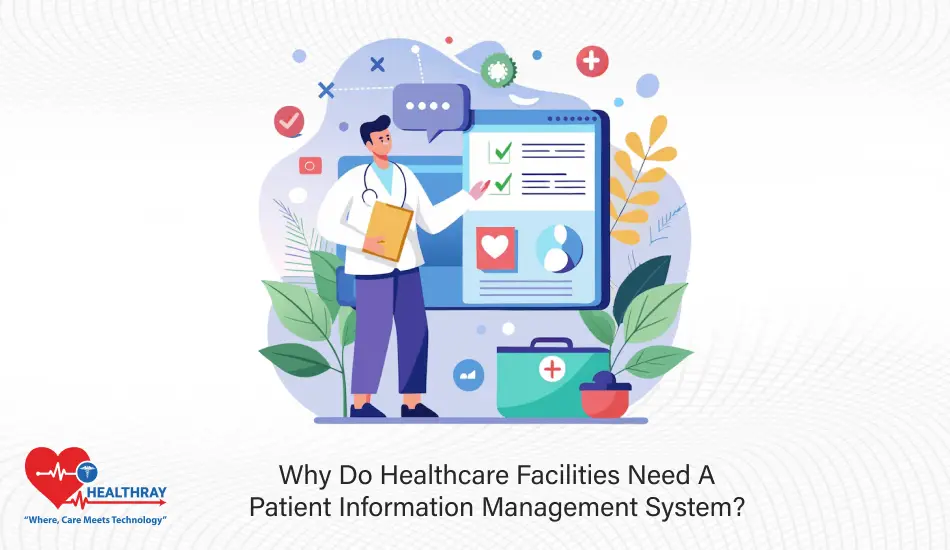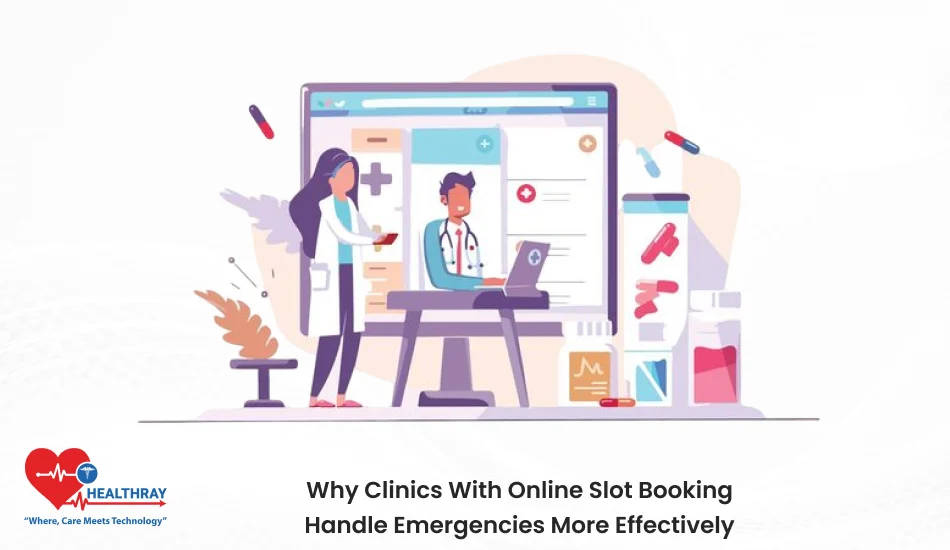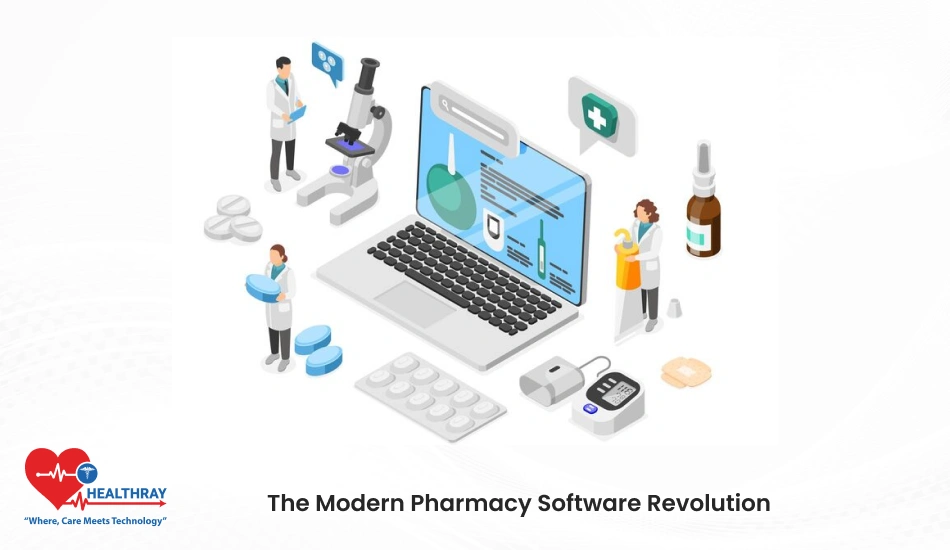The rules in which healthcare services store patient information have shifted. Gone are the times when paper trails and fragmented databases had to cope. Today, Patient Information Management Systems (PIMSs) are fast developing into necessities rather than luxuries. Such systems simplify the management of patient record databases for clinics, hospitals, and healthcare providers and guarantee that data accessed or manipulated is safe and operationally efficient.
But why is this so important? To tackle lost files and delayed treatment and to dismantle an inefficient workflow, for example. The reasons will be discussed in this article: why every small clinic or large hospital should consider installing a patient information management system: what such a system would offer every party in the health system-from clinic manager to patient-and some practical advice on how to choose the right system.
Benefits of a Patient Information Management System for Everybody

Clinic Managers: Streamlining Operations and Improving Efficiency
Handling patient records, appointment calendars, and administrative tasks may overwhelm clinic managers.
In such cases, a PIMS will be the operational backbone of a clinic, centralizing all patient data. This will allow managers to access patient history, billing details, and even staff schedules with a few clicks.
This results in zero human errors caused through processes manually. It will additionally save time spent on administrative tasks; instead, more is dedicated to improving the overall workflow of the clinic.
Healthcare IT Professionals: Improving Security and Integration
Data security and system integration, the two main priorities of an IT professional, are assured by the PIMS. It supports advanced encryption, role-based access control, and audit logs designed for unauthorized access to sensitive patient data. Moreover, these systems promise integration with existing healthcare tools-including others like laboratory management systems and diagnostic software.
This not only assures a secure data environment but also reduces the need to have several separate systems, thus increasing simplicity and cost-effectiveness of IT management.
Decision Makers in Healthcare Organizations: Improving ROI
Indeed, there are continuing efforts by decision-makers to enhance the quality of patient care, but at the same time, operational costs need to be minimized. PIMS can provide valuable insights into patient data, resource utilization, and overall performance metrics in real time. Such insights into patient data are useful in enhancing sound decision-making concerning staff hiring, budgeting, and resource-allocation.
Moreover, investment in a well-implemented PIMS becomes cost-efficient in the long run as overhead costs related to manual data handling significantly reduce.
Doctors: Faster and Better Decision Making
There is a huge benefit for doctors in getting availability of complete patient data in a quick time. They can view the medical history, diagnostic results, and treatment plan through a single window in PIMS. Thus, delays arising from searching scattered records or waiting for updates from different departments shall be avoided.
As a consequence, a faster data flow leads to better-informed decisions being made by doctors and, therefore, improved patient outcomes. Potential medication and condition conflicts are also reduced.
Patients: Empowering them in their health journey
The PIMS translates into the transparency and convenience that patients need. They can very easily access their medical records, their appointment schedules, or maybe even their test results through patient portals. This access to such information empowers the patient to feel more involved whenever decisions about their healthcare are made.
Patients also enjoy shorter waiting time and more streamlined communication with their health providers. These factors lead to higher satisfaction among patients and create more trust in the healthcare system. How Patient Information Management Systems Transform Healthcare Delivery Given that seamless, timely access to accurate data still underpins effective health care delivery, PIMS will change the way healthcare facilities operate by eliminating bottlenecks and improving the coordination of operations overall.
Streamlined Access Across Departments to Data

The big issues are usually divisions of patient data among departments. Now with a PIMS, any bit of information a lab report, imaging results, or treatment history is stored in one location and is very secure. Consequently, interdepartmental access is faster at providing timely and accurate care to patients.
For example, when a patient has had their diagnostic tests done, all these results will be automatically uploaded to the system. Doctors, nurses, and specialists can now see these findings without unnecessary delays, allowing faster diagnoses and preparation of a better treatment plan.
Fewer Errors, Better Outcomes
Errors in healthcare processes occur because certain records misfiles occur, and some prescriptions go wrongly written. This risk can be reduced by PIMS, as it can automate data entry and have a complete digital audit trail. Real-time alerts on possible drug interaction or allergy will be sent to doctors to avoid possible medical errors through patients.
Better health outcomes go hand in hand with improved patient safety. The more reliable and updated information is, the more precise the treatment plan becomes, resulting in fast recovery and fewer complications.
Enhanced Patient Communication
Another corner in succeeding healthcare delivery is patient engagement. PIMS includes features such as patient portals that grant people the ability to book, see their own records, and liaise with the healthcare providers directly. These empower the patients while engendering confidence between him and his care team.
Better communication also reduces no-shows and late arrivals. Automated appointment reminders and follow-ups will help patients stay on track with their treatment schedules, ensuring better adherence to medical advice.
Increased Operational Efficiency
Administrative workload is an enormous drain on time and resources, but PIMS automates scheduling, billing, and record-keeping so that staff can channel their energies into providing patient care. Workflows can be optimized with workflow automation in healthcare facilities so that one can handle multiple patients within a given time period without burning out the workforce.
These efficiencies extend to billing too. Integrated billing systems bring precision to insurance claims and reduce the possibility of disputes or delays.
Support for Evidence Based Practice
PIMS are more than mere data storage but provide meaningful data insights. Embedded analytical tools enable health care providers to analyze patterns, produce outcome measures, and adopt evidence-based practices. For example, a hospital can deduce its recovery rates for specific treatments and utilize this to improve protocols.
With such knowledge, healthcare can offer proactive care instead of reactive care, increasingly improving patient satisfaction and outcomes.
Challenges in Deploying a Patient Information Management System and the Way Forward
Although Patient Information Management Systems (PIMS) provide massive benefits, implementations can face some hurdles. These hurdles and practical solutions to them shall be explored.
Enhance Initial Cost
The Challenge: PIMS goes with initial setup costs of software, hardware, and training. This could be an obstacle for small clinics and healthcare facilities since most operate under limited budgets.
The Solution: Start with a scalable system that allows gradual upgrades as per the growing demands of your facility. Cloud-based PIMS options usually demand lower overhead costs since they do not need heavy investment in hardware. Further, talk about the savings PIMS can create in the long run by reducing administrative costs and errors.
Resistance to Change
The Challenge:
Staff and doctors accustomed to traditional processes may resist transitioning to a digital system. This resistance can slow adoption, and thus, influence overall efficiency.
The Solution:
Upon engaging with your team early on by explaining how PIMS can ease their work, provide hands-on training and support channels for troubleshooting. It may also be beneficial to think about appointing ‘system champions’ in your organization who would advocate for the new system’s benefits.
Data Migration Difficulties
The Challenge:
Migrating existing patient records from paper or outdated systems into a PIMS could take a considerable amount of time, during which they are often prone to errors. This step is vital because any missteps in migration can compromise the integrity of patient data.
The Solution:
Work with experienced vendors or consultants who specialize in data migration. Use automated tools to transfer data efficiently and conduct comprehensive quality checks to ensure accuracy. Start the process in phases so as not to disrupt regular daily activities.
Data Security Areas
The Challenge:
Handling sensitive patient information bears risks, which include breaches or unauthorised access. To adopt a PIMS, there must be stiffened cybersecurity measures.
The Solution:
Choose a system with advanced security features, such as data encryption, role-based access controls, and frequent security updates. Train your staff on best practices for data security, such as identifying phishing attempts and enforcing strong password management.
Integration with the Existing Systems
The Challenge:
In most cases, healthcare facilities have several systems for billing, diagnostics, or scheduling, and making them work together can become quite complicated.
The Solution:
Select a PIMS that can easily integrate with third-party tools. In the consideration of the selected systems, give preference to interoperability such designs. Work hand-in-hand with an IT professional to ensure proper configuration of all systems.
Ongoing Maintenance and Updates
The Challenge:
Keeping the system up-to-date and functional requires it to receive constant attention, as no matter how good a PIMS is, it can end up being down or not functioning quite right without regular maintenance.
The Solution:
Have a maintenance plan with your PIMS vendor that includes frequent software updates as well as provision for technical support round-the-clock. Assign an internal IT team to manage day-to-day performance and solve problems as they arise.
Trained and Supported Staff
The Challenge:
However advanced, a system is as good as its handlers. Poorly trained staff usually results in mistakes, thereby leading to underutilization of the PIMS.
The Solution:
Invest heavily in comprehensive training programs that relate to the role of each of your staff members. User manuals, video tutorials, and access to help desks all go a long way toward ongoing support. Feedback should be encouraged to continue improving learning resources.
Becoming a Good Decision-to-Choosing the Right Patient Information Management System

With Patient Selecting the appropriate Patient Information Management System (PIMS) goes a long way in maximizing the advantages that this entails for one’s health facility. The market is quite crowded with such systems, so here is a simple step-to-step guide to choosing well.
Understand the Needs of Your Facility
Before delving into the evaluation of what the possible solutions to PIMS may be, analyze the actual problems within your organizations.
- Poor patient records?
- Do you have good communication systems for patients and those staff?
- Is this data security obsession?
After identifying these issues, you can examine systems that aim to fix the unique ones you have in your health facility.
Superior User Experience
An effective system is only effective in use if it is simple to use by both staff and patients. Opt for a PIMS that has:
- Intuitive interfaces
- Minimal learning curves
Adjustable characteristics that can be tailored for different roles like doctors, administrators, and IT staff.
Request for a demo or trial period in order to have that natural and uncomplicated feel for the system.
Integration capabilities assessment:
PIMS with Existing Infrastructure
Healthcare facilities often operate different systems for billing, diagnostics, and scheduling, and making sure that the PIMS is compatible with the prevailing ones should avoid all these undesirable consequences.
Look for things like:
Compatibility with third-party tools like a virtual address book that can automatically collect and sync patient contact information with the main system.
Effortless data exchange across platforms
So, every department would be in sync without flipping.
Security Robustness
Data security is non-negotiable when it comes to healthcare. Check that the PIMS includes:
Data encryption
Access controls based on roles
Regular updates that keep the system secure
HIPAA or GDPR compliance (depends on where you are within the region) A sound security framework will in the end secure the sensitive patient information and protect against possible breaches.
Scalability:
Your facility’s requirements are likely to change over time. Select a system that can grow along with you. For instance, a scalable PIMS might allow: The addition of new users or departments
Handling increased data volume Upgrading features without a complete overhaul of the system This will ensure that it remains a useful solution as your facility changes and develops.
Analytics and Reporting
Learned that modern PIMS should do more than just store data. Look for tools that provide
actionable insights such as:
- Patient Care Metrics – real-time reporting
- Performance analytics for staff and operations
- Custom Dashboards
These insights will help you make the most informed decision and improve the overall efficiency.
Reliable Support and Maintenance
A responsive vendor is very critical in the smooth functioning of the system. Consider the following:
- Availability of customer support services (24/7 as compared to those only available during business hours)
- Training programs for your staff
- Long-term maintenance plans including regular updates
Strong vendor support ensures that your system will be in smooth operation without incurring expensive down time.
Setting a Budget and Evaluating Costs
- Money is a big deal, but it’s not the only thing to put in the bucket. Initial setup and licensing fees Ongoing maintenance and subscription costs Long-term savings through less inefficiency Choose an option that best balances costs and benefits.
Get Opinions from Current Users
Before finalizing your choice, talk to other health facilities that use the same system. Ask them about: their implementation, experience any challenges they faced and how the system improved their operations. Real-world feedback gives an insight that you never get from the product brochure.
Involve Your Team in the Decision
Finally, involve the primary stakeholders in the decision-making process. This could be clinic managers, IT personnel, or even the doctors. This will ensure that practical end-user requirements are met in the eventual PIMS installed.
Conclusion
Healthcare is changing with rapidity, and patient information management attached with the old methods is fast becoming untenable. A Patient Information Management System, or PIMS, constitutes the core of the foundation upon which quality, most efficient, secure, and patient-centered care is delivered. Whether it is streamlining workflows and improving data accuracy or enhancing communication and empowering patients, the benefits of PIMS span the whole spectrum of healthcare delivery.
For clinic managers, it makes operations simple and if there are errors, it eliminates them. For IT professionals, it helps create an integrated system that is safe and less risk prone. Outcome indicators can be made data-driven, while doctors can deliver speedier, more accurate care, if not at times using an evidence-based approach. Patients, sometimes worst affected, will have better experiences and greater participation in their health journeys.
Even though the implementation may prove challenging, the benefits over time from adopting a Hospital Information Management System far outweigh the initial obstacles. For managing small clinics or even vast organizations involved in healthcare, investing into a reliable scalable user-friendly PIMS solution will not only give a technological upgrade rather it’s a gesture towards the commitment of improved results in patient outcomes along with operational efficiency.





